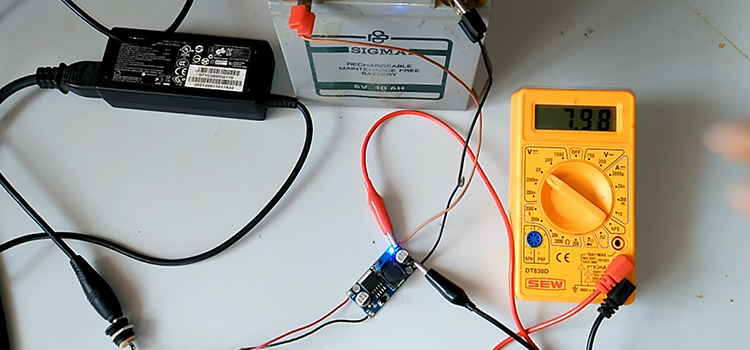Can I Use 19V Charger for 12V? | Complication of Higher Voltage in Lower Voltage Device
A 19v charger can be used for a 12v device, that is for an uncertain period of time depending on the device. Though the device may just work fine after being plugged in, the possibility of a damaged device remains. Most circuits in general are set to conduct at a certain range and anything beyond that slowly but surely just shortens the lifespan of the device.

Complication of Higher Voltage in Lower Voltage Device
For most devices, the tolerance to supply voltage can go as low as 5-10% or it can go beyond twice the specified voltage and reach 100% of the supply voltage.
19v chargers in general are considered too high for a 12v device. In most cases venturing beyond 14-15v is highly discouraged. Although the appliances work for a while, they will very likely be damaged after that period has passed. It could be seconds, minutes, hours, days, or even months in some cases.
A 19v will naturally toast any device especially consumable devices designed to run at a lower voltage. Very unlikely but it may also catch on fire. For an AC adapter to work right an exact voltage(12v) and an equal or higher current flow(1.5) would be needed.
Different Outcomes of 19V Connecting to 12V
If the supposed “12v” device is devised to be employed in cars/boats, the assigned 12v supply reached up to around 14v with the engine running and ultimately may carry transients high up to 200v, in that regard the device may just be able to work with 19v, for a short period at the very least.
While that may be true for devices like cars/boats, other devices are of lesser range. They may contain parts exclusively rated for 16v or have an analog power supply. The higher disintegration due to higher input voltage may cause it to overheat and damage it.
Possible Methods for Avoiding Complications While Connecting 19V to 12V
It is possible to have the same amount of output of current and voltage rate for various voltage adapters or chargers. So if the 19v requests input of “Y” amps and “X” volts, any charger that has a lesser range can be used, but the period of charging increases.
Voltage Divider Circuit
Another method would be using a 19v DC charger installed with a voltage divider circuit that would drop down the output to around 15v DC. While manufacturers include this circuit that has constant regulated power supply to protect their devices from line surges, overvoltage etc. the design isn’t really the devised parameter. So that only works within design limitations.
In addition to the methods would be, checking to see if the charger is only charging the battery compartment alone. If that is the case then there is no problem in using the 19v to charge a 12v, by making sure to disconnect the charger once the battery reaches the peak. But the point to be noted if the device is charged and used without a break, a good chance of toasting the board stands.
Conclusion
Most devices these days are rated in specific sections for their required chargers. While the ultimate efficiency of the device components and their longevity depends on the manufacturers’ design, working with anything other than specified is not recommended. So while a 19v charger can be used to charge a 12v device it can not be encouraged so as not to harm the device components as an eventual factor.
Subscribe to our newsletter
& plug into
the world of circuits